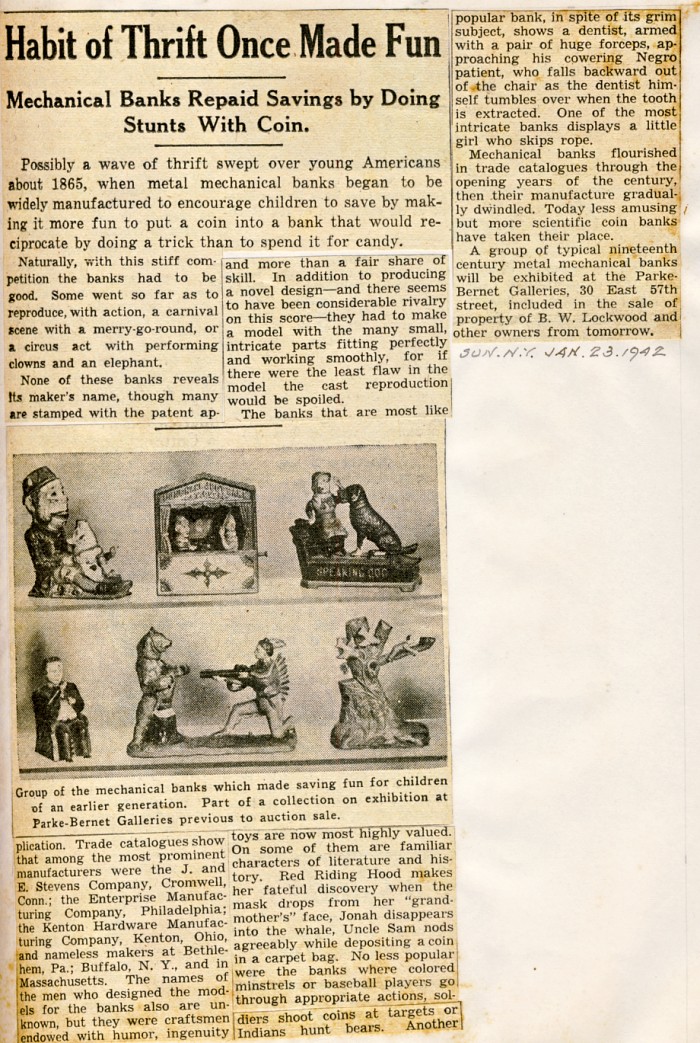| January 23, 1942, NY SUN newspaper See below for OCR searchable text  Habit of Thrift Once Made Fun Mechanical Banks Repaid Savings by Doing Stunts With Coin. Possibly a wave of thrift swept over young Americans about 1865, when metal mechanical banks began to be widely manufactured to encourage children to save by making it more fun to put a coin into a bank that would reciprocate by doing a trick than to spend it for candy. Naturally, with this stiff competition the banks had to be good. Some went as far as to reproduce, with action, a carnival scene with merry-go-round, or a circus with performing clowns and an elephant. None of these banks reveals its maker's name, though many are stamped with the patent application. Trade catalogues show that among the most prominent manufacturers were the J. and E. Stevens Company, Cromwell Conn.; the Enterprise Manufacturing Company, Philadelphia; the Kenton Manufacturing Company, Kenton, Ohio, and nameless makers at Bethlehem, Pa.; Buffalo, N. Y.., and in Massachusetts. The names of the men who designed the models for the banks also are unknown, but they were craftsmen endowed with humor, ingenuity and more than a fair share of skill. In addition to producing a novel design — and there seems to have been considerable rivalry on this score — they had to make a model with the many small, intricate parts fitting perfectly and working smoothly, for if there were the least flaw in the model the cast reproduction would be spoiled. The banks that are most like toys are now most highly valued. On some of them are familiar characters of literature and history. Red Riding Hood makes her fateful discovery when the mask drops from her "grand-mother's" face, Jonah disappears into the whale, Uncle Sam nods agreeably while depositing a coin in a carpet bag. No less popular were the banks where colored minstrels or baseball players go through appropriate actions, soldiers shoot coins at targets or Indians hunt bears. Another popular bank. In spite of its grim subject, shows a dentist, armed with a pair of huge forceps, approaching his cowering Negro patient, who falls backward out of the chair as the dentist himself tumbles over when the tooth is extracted. One of the most intricate banks displays a little girl who skips rope. Mechanical banks flourished in trade catalogs through the opening years of the century, then their manufacture gradually dwindled. Today less amusing but more scientific coin banks have taken their place. A group of typical nineteenth century mechanical banks will be exhibited at the Parke-Bernet Galleries, 30 East 57th street, included in the sale of property of B. W. Lockwood and other owners from tomorrow. SUN.N.Y. JAN.23.1942 Caption under photo: Group of the mechanical banks which made saving fun for children of an earlier generation. Part of a collection on exhibition at Parke-Bernet Galleries previous to auction sale. |
